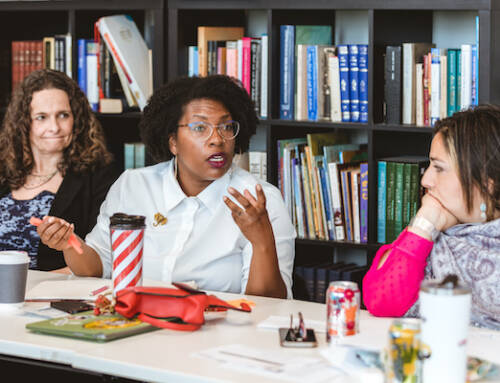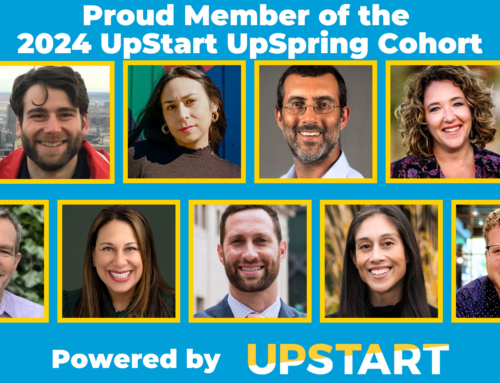January 19, 2016
By Maayan Jaffe-Hoffman
eJewish Philanthropy
It has been 25 years since the National Jewish Population Survey was conducted. The 1990 survey highlighted several challenges within the Jewish community, among the most prominent – striking and steady growth in the intermarriage rate.
At the time, the study found that 47 percent of those married in the half-decade leading up to the survey had intermarried, an increase of several percentage points between the decade prior and a jump of more than 30 percent since the 1970s.
In a flurry to stop the trend, a National Jewish Continuity Commission – and several local Jewish continuity commissions – was formed. The goal was to keep Jews, who were expressing ever less desire to be part of the fold, Jewish.
Did we succeed? As with most topics in the Jewish life, the answer isn’t black or white.
From a numbers perspective, intermarriage is up. The 2013 Pew Survey of American Jewry found an overall intermarriage rate of 58% and a non-Orthodox intermarriage rate of 71. But Yehuda Kurtzer, president of the Shalom Hartman Institute of North America, says one cannot look only at the numbers.
“I don’t know that any of the continuity commissions made any difference because we assumed these were trends that were reversible as opposed to endemic of the American Jewish experience,” Kurtzer explains. “The change is that more Jewish leaders have reconciled themselves to this being reality.”
Kurtzer says the goals set after NJPS were based on “what we thought Jewish collective identity should be” based on the past, as opposed to setting forward-thinking goals. In recent years, he explains, he sees a shift: “American Jews are going to intermarry. Now what do we want to do with that reality?”
In some ways, Leonard Saxe, director of the Cohen Center for Modern Jewish Studies at Brandeis University, agrees with Kurtzer. While he admits that intermarriage rates are at best stagnant (as opposed to on the decline), he sees a shift in the number of children of intermarried parents who are embracing their Jewish identity.
“The intermarriage rate does not directly affect the future shape of the Jewish population,” says Saxe. “Although in earlier generations only a minority of children of intermarried parents identified as Jews (40%), Pew’s data indicate that a substantial majority of millennials (60%) raised in intermarried households identify as Jewish. … It is quite extraordinary what has happened.”
Saxe also reports that more people belong to synagogues today than they did in 1990, despite reports of dwindling membership. When you expand the definition of synagogue to include minyanim and havurot and account for the growing American Jewish population, adults who live in a household of a synagogue member is essentially unchanged, the number of households that include a synagogue member has increased by 30%.
“More than a million households currently include an adult member of a synagogue, compared to 840,000 in 1990,” says Saxe.
“This is certainly not a complete victory,” he says, but it cannot be overlooked. He believes this shift has much to do with a growing trend toward increased Jewish innovation.
In 1990, Jews entered the realm of the most educated part of the population in America and several once-immigrant families solidified their statuses among the country’s most successful. Many of these families have chosen to invest in Jewish community and programming, enabling new opportunities for out-of-the-box engagement and outreach. Twenty-five years later, we are starting to see the results, Saxe says.
Jeff Solomon, former president of the Andrea & Charles Bronfman Philanthropies and a board member with Leading Edge, explains, “[NJPS] woke up some entrepreneurs who applied their entrepreneurial spirit to Jewish identity.”
Examples: Taglit-Birthright Israel, PJ Library some of the new Jewish camping initiatives, among others.
“These are programs that have really come to scale and there are a significant number of Jews taking advantage of them,” Solomon says.
The impact of Birthright, now 17 years old, is just beginning to come to the forefront. Saxe, who has researched the program heavily, says a proven result of Birthright is that the number of Jews who travel on Birthright and marry Jews exceeds the national average.
Maya Bernstein says she sees innovation where she sits, too. An associate at UpStart, Bernstein says there is “tremendous excitement around engagement in Jewish life from Gen X and Gen Y, who are beginning to say, ‘I want to make Judaism my own.’ … There have been really exciting new engagement offerings that have popped up in the past decade.”
“Every Jewish American is a Jew by choice,” says Solomon, noting we are seeing shifts in funding toward programs that encourage Jews to choose Jewish.
Kurtzer worries those shifts might be too dramatic, though. While he believes there is a need for outreach, he is concerned the Jewish community is starting to underfund the core – those who are choosing to be engaged. At risk: The future of Judaism and our core educational institutions.
“There are two theories for how to engage the non-committed. One is to ignore those who are with you because you already have them. The other is to build a robust infrastructure for those who made the commitment and that infrastructure becomes appealing to those on the outside. … It is really expensive to be a highly committed Jew in America. If, however, you elect not to be highly committed, a lot of opportunities are made available to you for less or free. It’s a weird message being sent to committed Jews,” Kurtzer says.
He also worries the educational institutions that are producing the kinds of committed Jews who can engage others could buckle under the weight of lack of funding – and this could leave the community without future leaders.
“We are expressing Judaism is all sort of unprecedented ways,” Kurzter says with an air of positivity. “But I would like to see a greater sense of intentionality.”
Similarly, Bernstein feels we are at risk of “thinning Judaism.” She and Solomon both question our methods for educating today’s younger Jews. Ala-carte is okay, they say, but there needs to be authentic Jewish knowledge being passed down, too.
“How much knowledge and training does one need to have to see the value of and feel committed to living a Jewish life?” Bernstein asks. “If Judaism becomes like anything else in the modern world – you can pick and choose if you feel like it – and there isn’t a sense of understanding or grounding or Jewish history or knowledge, we are at risk of either watering down Judaism or losing its depth and true value.”
Bernstein says that while we shift our focus toward more innovative outreach we must maintain the why.
“We have to start with why at the core and then around why is the what and around what is the how,” she says.
In the 1950s, the now defunct “Look” magazine wrote about an ever-dying Jewish people. If one looks at the studies of the mid-1960s, there was a belief that the American Jewish community couldn’t last, notes Solomon.
“Here we are,” Solomon says. “We have challenges. … I have every reason to be optimistic.”
Our purpose is to enable entrepreneurs to bring bold Jewish ideas to light. We help them reach Up to people in new ways that are meaningful, more inclusive, and create a brighter future for our Jewish community and the world we share.




